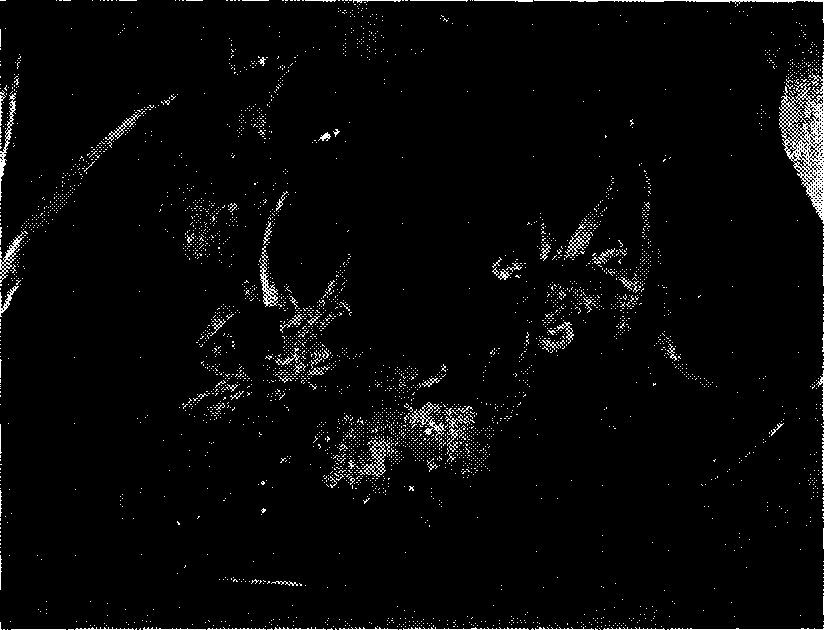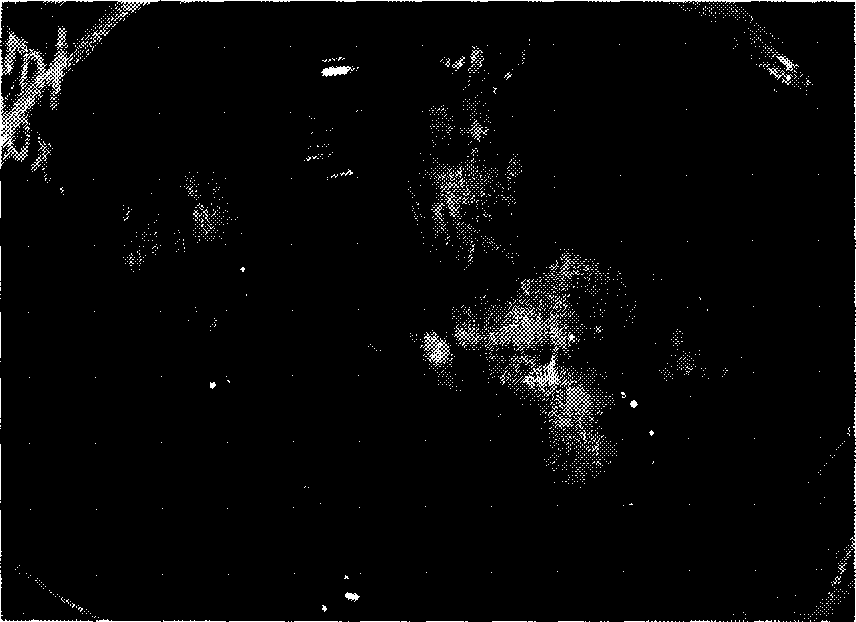Method for establishing perennial ryegrass inheritance and transformation receptor system through embryoid way
A technology of genetic transformation and embryoid bodies, applied in the fields of biotechnology and modern agricultural biology, can solve problems such as unsatisfactory regeneration systems
- Summary
- Abstract
- Description
- Claims
- Application Information
AI Technical Summary
Problems solved by technology
Method used
Image
Examples
Embodiment 1
[0023] The mature seeds of perennial ryegrass (Lolium perenne L.) were soaked in tap water for 0.5 hours; mixed with detergent and water at a ratio of 1:50, soaked for 1 hour, rinsed with running tap water for 12 hours, soaked in 70% alcohol for 30s, sterile water Rinse 5 times; then soak in 0.1% mercuric chloride for 15 minutes, and rinse with sterile water for 5 to 10 times. Under sterile conditions, the seeds were cross-sectioned with a scalpel and then inoculated into the callus-induced medium, and 5.0 mg / L of 2,4-dichlorophenoxyacetic acid 2,4-D,6-benzylaminoadenine 6 was added. - BA 0.5mg / L, naphthalene acetic acid NAA 0.5mg / L and hydrolyzed casein CH 500mg / L medium, cultured in the dark for 30 days. Among them, the preparation of the medium is to directly add hormones to N 6 other components of the medium and then autoclaved.
[0024] The instruments and equipment used are the well-known ultra-clean working machines and automatic autoclave sterilizers for plant tissue...
Embodiment 2
[0030] The culture procedures were all carried out as in Example 1, except that 2,4-dichlorophenoxyacetic acid 2,4-D was added at 8.0 mg / L, and 6-benzylaminoadenine 6 was added to the callus induction medium. -BA is 0.6mg / L, naphthaleneacetic acid NAA is 0.6mg / L, 2,4-dichlorophenoxyacetic acid 2,4-D is added to the callus subculture medium is 8.0mg / L, kinetin KT is 0.6mg / L, add 2,4-dichlorophenoxyacetic acid 2,4-D to the embryoid body induction medium to 0.7mg / L, kinetin KT to 1.0mg / L, in the embryoid body regeneration plant medium Add 6-benzylaminoadenine 6-BA to 0.4mg / L and kinetin KT0.4mg / L.
[0031] In the regeneration system established by the above method, the callus induction rate reaches 85.25%, the embryoid body induction rate reaches 75.04%, the regeneration rate reaches 85.72%, and the transplant survival rate reaches 97.5%.
Embodiment 3
[0033] The culture procedures were all carried out according to Example 1, except that 2,4-dichlorophenoxyacetic acid 2,4-D was added to the callus induction medium at 6.0 mg / L, 6-benzylaminoadenine 6 -BA is 0.8mg / L, naphthaleneacetic acid NAA is 0.3mg / L, 2,4-dichlorophenoxyacetic acid 2,4-D is added to the callus subculture medium is 6.0mg / L, kinetin KT is 0.8mg / L, add 2,4-dichlorophenoxyacetic acid 2,4-D to the embryoid body induction medium to 0.5mg / L, kinetin KT to 1.5mg / L, in the embryoid body regeneration plant medium Add 6-benzylaminoadenine 6-BA to 0.8mg / L and kinetin KT0.4mg / L.
[0034] In the regeneration system established by the above method, the callus induction rate reaches 86.06%, the embryoid body induction rate reaches 75.33%, the regeneration rate reaches 85.2%, and the transplant survival rate reaches 98%.
PUM
| Property | Measurement | Unit |
|---|---|---|
| induction rate | aaaaa | aaaaa |
Abstract
Description
Claims
Application Information
 Login to View More
Login to View More - R&D
- Intellectual Property
- Life Sciences
- Materials
- Tech Scout
- Unparalleled Data Quality
- Higher Quality Content
- 60% Fewer Hallucinations
Browse by: Latest US Patents, China's latest patents, Technical Efficacy Thesaurus, Application Domain, Technology Topic, Popular Technical Reports.
© 2025 PatSnap. All rights reserved.Legal|Privacy policy|Modern Slavery Act Transparency Statement|Sitemap|About US| Contact US: help@patsnap.com



